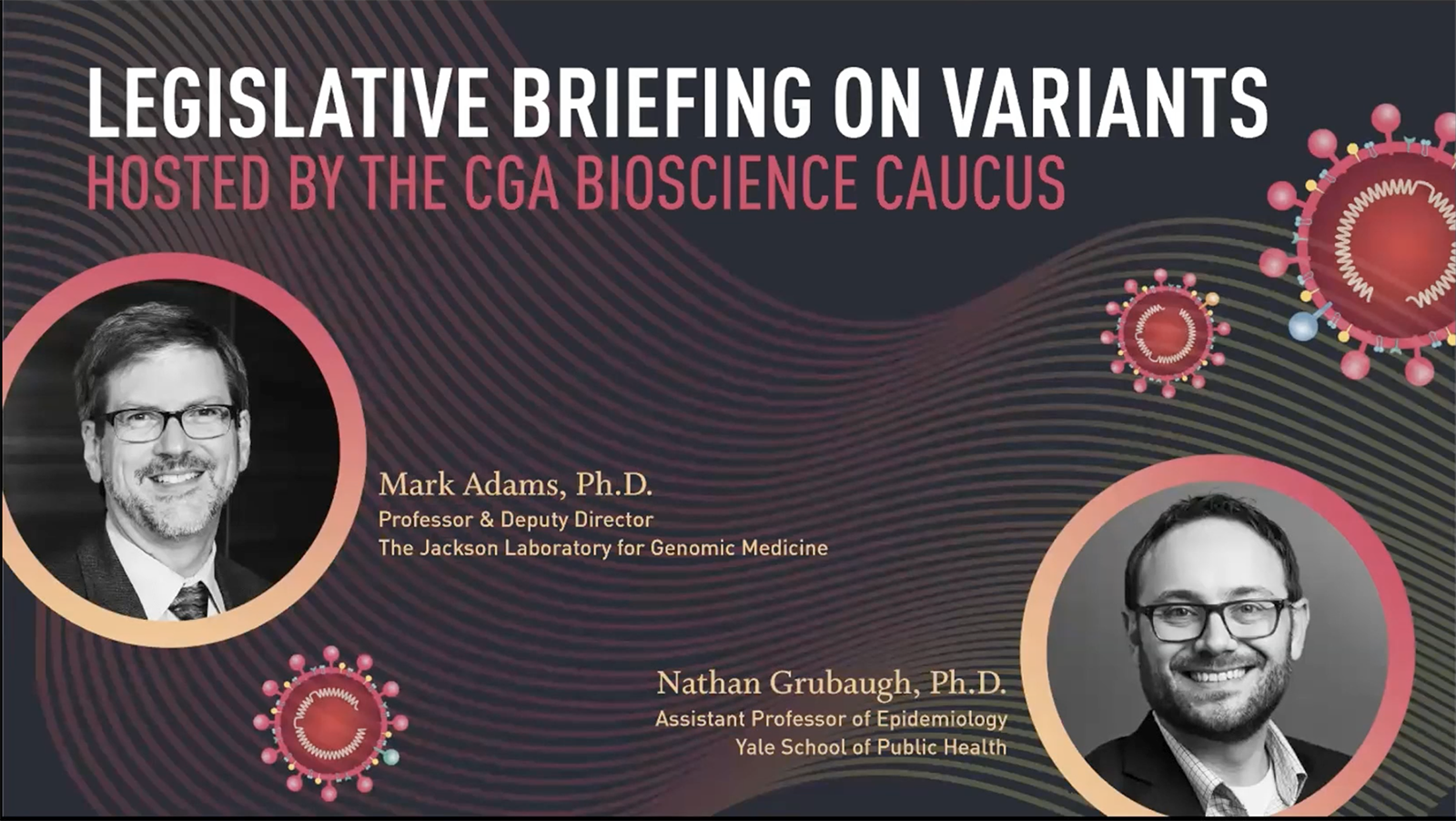While the vaccine is proving an effective defense against COVID-19, genomic surveillance and sequencing positive test samples to detect variants statewide will be crucial as researchers continue to study mutations and understand the way they impact efforts to remediate the virus.
That was the takeaway message at a legislative briefing held by the CGA Bioscience Caucus in May. During the event, The Jackson Laboratory for Genomic Medicine and the Yale School of Public Health presented information on the current status of variants and sequencing in Connecticut. A recording of the briefing is available here.
Dr. Mark Adams, Ph.D.Leads the research and clinical genome sequencing groups.Mark Adams , professor and deputy director, The Jackson Laboratory for Genomic Medicine, and Dr. Nathan Grubaugh, assistant professor of epidemiology, Yale School of Public Health, spoke to legislators about how this evolving situation is being monitored, which variants are present to date, and what we know about how the mutations are changing the properties of the virus itself.
Understanding the COVID variants
Adams gave an overview of variants, explaining how even tiny mutations in viruses can change their function, making them more virulent, less susceptible to available therapeutics or more contagious. Increased transmissibility, for instance, is one of the concerning factors in the COVID-19 B.1.1.7 – or “UK” – variant, which now comprises the majority of positive cases in Connecticut.
“Knowing these mutations is important in both understanding how the virus works and spreads, but also in tracking what is happening throughout the community. And it’s sequencing that gives us that fine level of resolution,” he said during his presentation.
Current vaccination rates are an optimistic sign, he said, but continuing to sequence the virus will provide crucial insight in the weeks and months to come.
“Where we are right now is a real race between the vaccines that are protective and variants that are either spreading more rapidly or have the potential to infect vaccinated people,” said Adams. “The data right now shows that with the declining case count in the state, that vaccination is winning out, but what is really important to keep an eye on going forward is what the set of circulating strains are – and is that changing in response to the changing conditions here?”
Grubaugh followed with a presentation about the status of sequencing in Connecticut, noting that Yale and JAX are sequencing samples collected predominantly from along the shoreline, with a majority from New Haven County, and very few from others. The goal, he said, is working with the state to increase positive test collection across Connecticut. Current variant numbers compiled by JAX and Yale are updated every Thursday on covidtrackerct.com, a website maintained by members of the Grubaugh lab at Yale.
“Where we want to be is at least sequencing 5-10% of the cases every week across the state, and that is to help us to detect emergent variants when they are very low frequency, so that we don’t get caught off guard,” he said.
Staying vigilant with COVID surveillance
He said that the key will be finding ways to get samples from currently unrepresented areas into labs for sequencing.
“As this program continues to grow – which we are building upon every week, working with the Department of Public Health – this is really where we need to have a refocused effort on surveillance,” Grubaugh said.
During the Q&A that followed, legislators asked about vaccine breakthrough cases, new variants identified in India and how to stay ahead of these and other variants.
Adams said that, although researchers are optimistic that COVID-19 cases will continue to go down overall, continued variant tracking, in addition to testing, will alert them to important changes on the horizon in this evolving virus.
“The reason to keep an eye on not just the positivity rate is to understand whether or not B.1.1.7. or some other new variant coming up is an early warning sign that the ground has shifted around what the assumptions are,” he said. “Genomic surveillance can provide the early warning that something different is happening than what’s been happening in the past.”
